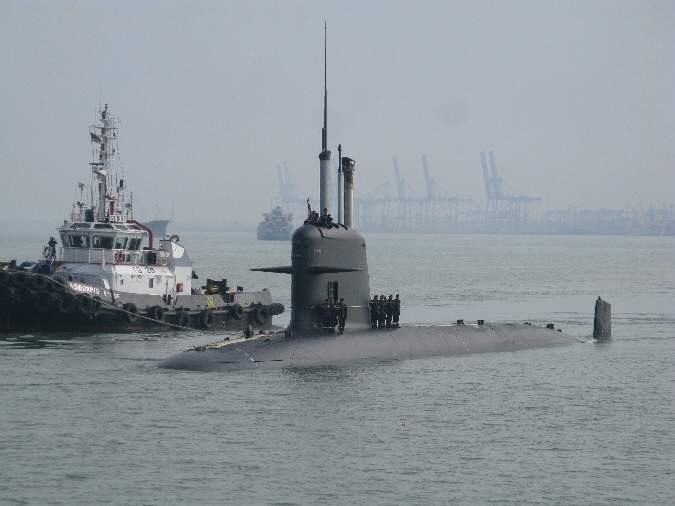
SHAH ALAM: A two sub fleet. It appears despite the RMN 15-to-5 plan, the navy is not destined to operate four submarines in the near future. Infact, it is likely in 20 years time it will continue with a two-submarine fleet with new ones as the current Prime Minister-class are almost near retirement by that time.
This scenario was revealed by RMN Chief Tan Sri Kamarulzaman Badaruddin in an interview at Kota Kinabalu today. (Feb. 2, 2018) Of course he did not say outright but that was the implication when he stated this.
Chief of Navy Admiral Tan Sri Ahmad Kamarulzaman Ahmad Badaruddin said the Navy plans to get one between 2031 and 2035 and another between 2036 and 2040.
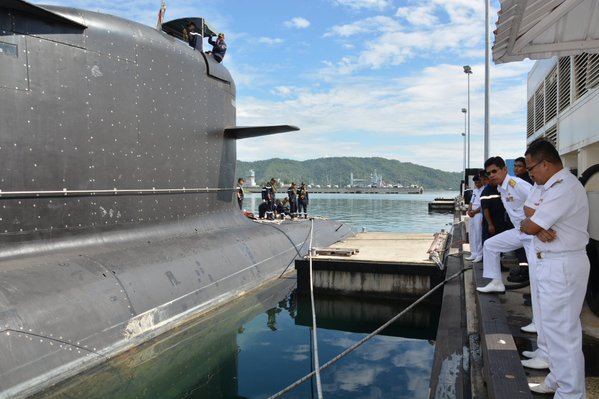
If we go by the 2031 and 2035 timeline, KD Tun Abdul Rahman will already be in service for some 25 years already. It came home in 2009, almost ten years ago, two years after it was commissioned. Twenty-five years is a long time for a submarine even though she may not be at sea all the time- due to refits and other operational reasons.
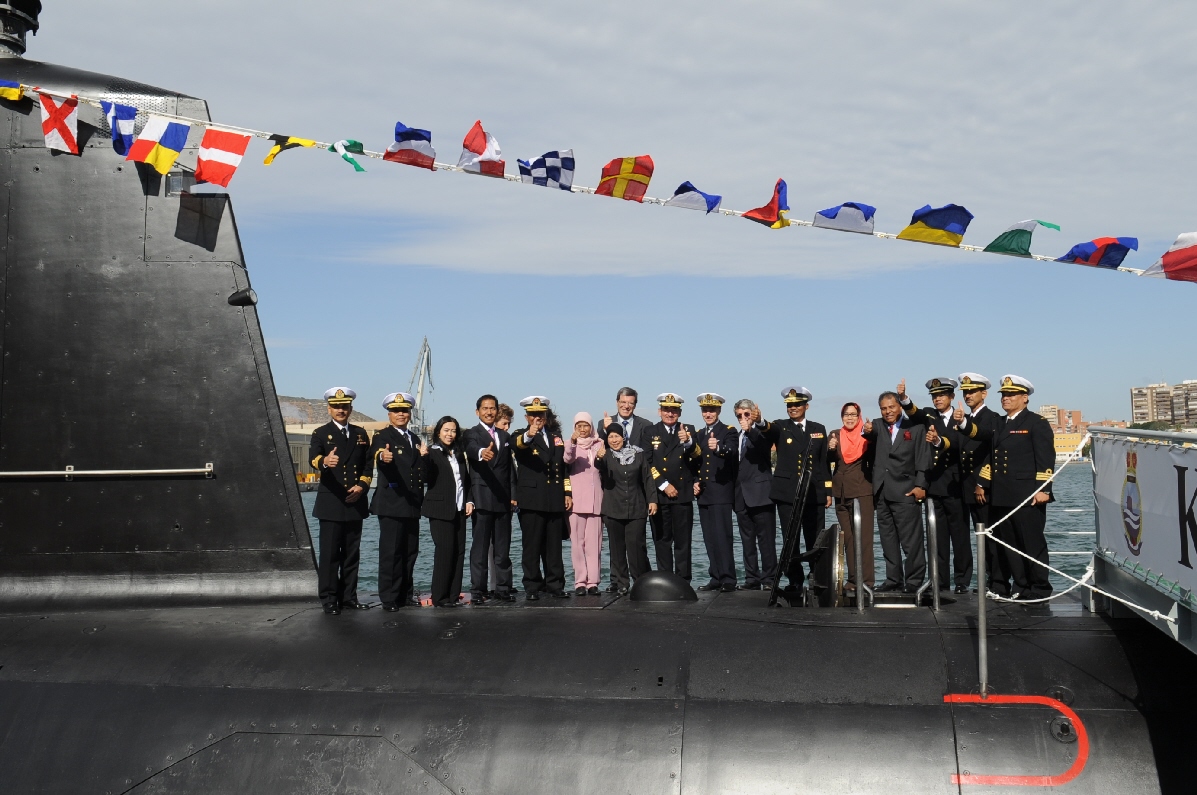
KD Tun Razak will be 27 years old when the fourth submarine is supposed to enter the fleet. It must be noted also that the timeline stated by the Chief was a best case scenario. And we all know that money does not grow on trees.
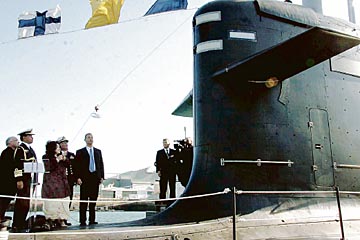
Of course both could soldier on until 2040 but they need expensive SLEP to be able to do that. So for the next refit, in 10 years time, the government must decide whether or not to conduct a SLEP to enable them to continue in service for another 20 years until the new boats are procured and in service.
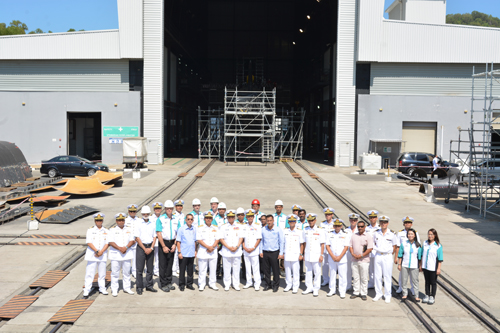
From The Star
KOTA KINABALU: The Royal Malaysian Navy plans to get two more submarines in the next 20 years as it prepares to face “new challenges”.
Chief of Navy Admiral Tan Sri Ahmad Kamarulzaman Ahmad Badaruddin said the Navy plans to get one between 2031 and 2035 and another between 2036 and 2040.
“We are faced with new challenges in our efforts to safeguard the security of our waters.
“We are constantly improving our strategies and increasing our abilities to face these challenges,” he said during the handing over of duties for the Submarine Force Commander at the Sepanggar Naval Base here on Monday.
He said this is part of the Navy’s effort to modernise and keep its assets up to date to face current challenges.
Meanwhile, Kamarulzaman said the handing over of duties of the Submarine Force Commander between Capt Abdullah Sani Ismail and Rear Admiral Zulhelmy Ithnain will see Zulhelmy take on a heavy task in maintaining security at sea.
“Rear Admiral Zulhelmy will be shouldering the task of making sure our strategic assets are in the best condition to face any challenge,” he said.
He said the presence of submarines in Malaysian waters gave the country a maritime advantage, especially in dealing with issues such as the overlapping claims in the South China Sea.Read more at https://www.thestar.com.my/news/nation/2018/02/26/navy-plans-to-get-two-more-submarines-by-2040/#lCge1Po7D5uyX3PF.99
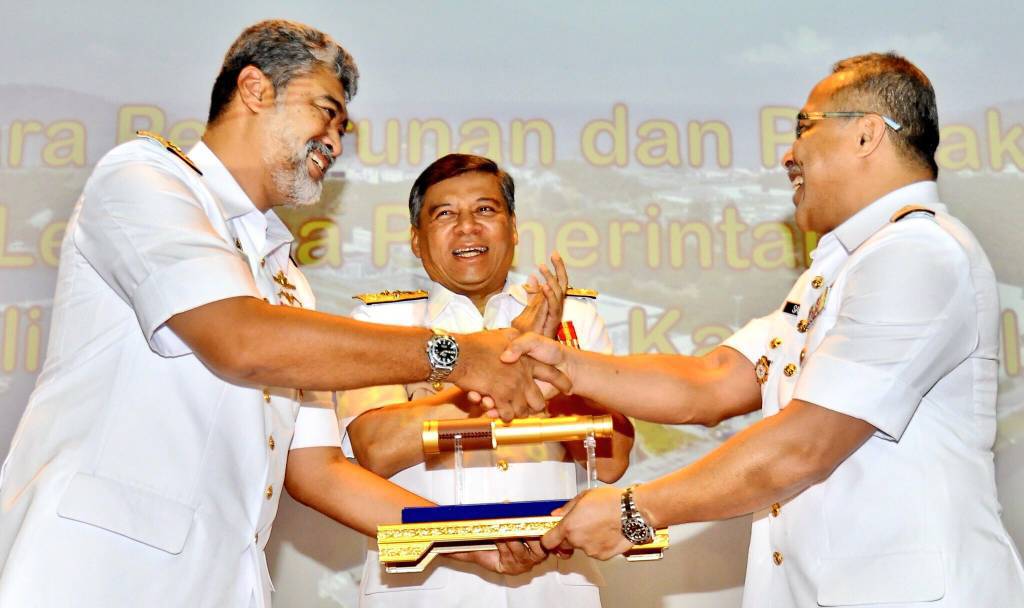
It is also of note that Kamarulzaman did not touch the elephant in the room while he was there at Kota Kinabalu naval base. Perhaps he was not asked about it by media. Oh, well.
Anyhow, the new Submarine Force commander Rear Admiral Zulhemy Ithnain was the CO of Tunku Abdul Rahman when she returned home in September, 2009. He was previously with Joint Force headquarters before returning to the Scorpene’s lair.
— Malaysian Defence
If you like this post, buy me an espresso. Paypal Payment

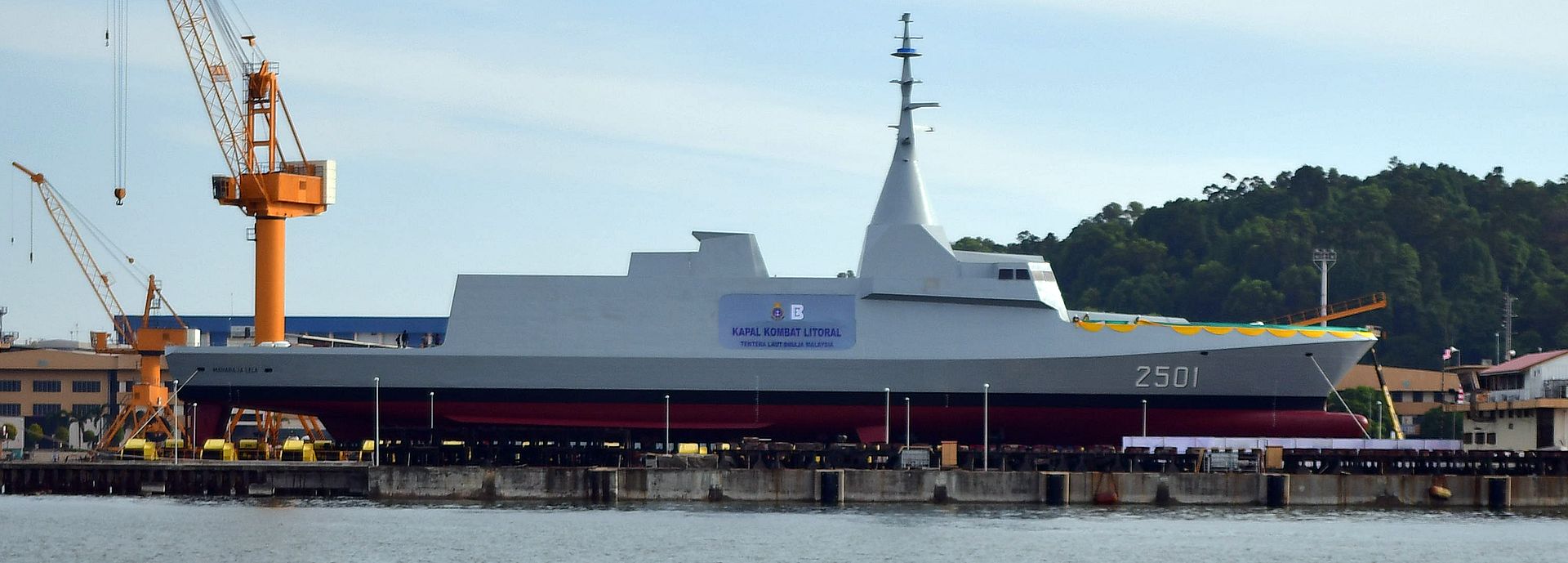
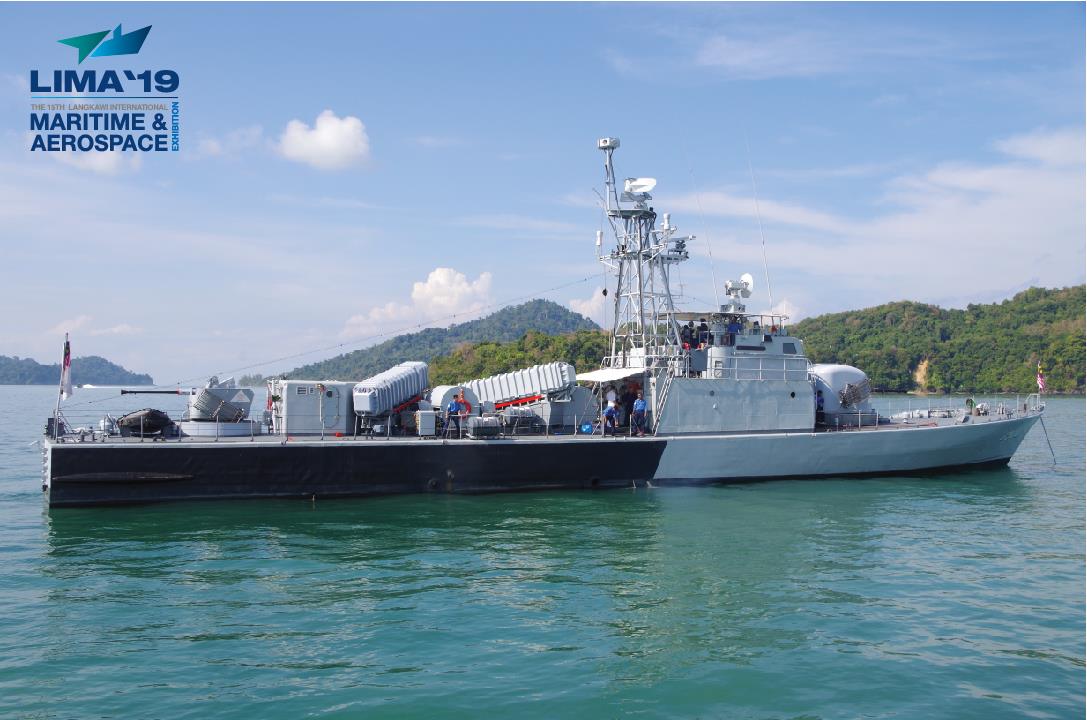

That’s my main concern. Successful implementation of the 15/5 is subject to factors beyond the RMN’s control. The RMN’s priority is reducing its logistical footprint but if it waits too long, by the time cash is available, DCNS might not be producing the Scorpene any longer. Similarly, the RMN wants more LCSs and Kedahs but if it waits too long, the initial LCSs and Kedahs will have systems that need replacing and if the initial and follow on batches don’t share much commonality [same applies to everything]; then it will defeat the purpose of the 15/5.
@ marhalim
Probably you don’t realise, but that was the plan all along.
https://www.malaysiandefence.com/15-to-5-and-lms/
That is why i put in my idea on the subs here.
https://www.malaysiandefence.com/exercise-with-indian-air-force/#comment-299275
Reply
Yes probably I was thinking of other things
Very sad indeed. Lately I keep wondering when KD Tun Hussein Onn (at least) will enter service..
@ azlan
At least the navy has a solid and achievable plan until 2045 that is put out for everyone to see.
The plan for additional new subs only in 2031 is grounded on reality, with the 2nd batch of kedah’s, LMS and MRSS is put at a higher priority than the 2nd batch of submarines. If you study the plan, each RMK is planned with spendings capped at around usd 2 billion, which is what the government has allocated previously. It really shows that the 15 to 5 plan is achievable if it gets the same funding every RMK as before. No requests that would be outside of what the government can afford. But that would mean some items would be at the end of the queue, and the submarines turn would only be in 2031.
next 20 years?? at that time i believe more advance submarine will be produced and scorpene may be unable to keep up with the advancement (yes, we can upgrade it but will cost a lot of $$). IMO, it’s better if we get submarine first for the next RMK
Off topic
Indonesia has ordered 4x Wing Loong 1 Armed UAVs. To be based in Kalimantan.
…. – ”At least the navy has a solid and achievable plan until 2045 that is put out for everyone to see.”
Why? Because you happen to personally agree with it? Note that the words ”solid” and ”achievable” are very premature [very early days] and dependent on various factors.
First of all, the RMN’s circumstances are different compared to the RMAF and army – despite your constant direct comparisons there are various factors at play which determine how the various services go about doing things. Secondly, there are a lot of doubts as whether or not the 15/5 is what the RMN needs or whether it will deliver what it’s intended to deliver. Not only doubts on my part [which don”t matter] but more importantly doubts within those in uniform. On paper it’s a great plan however.
…. – ”The plan for additional new subs only in 2031 is grounded on reality, with the 2nd batch of kedah’s, LMS and MRSS is put at a higher priority than the 2nd batch of submarines.”
Irrespective of what’s ”grounded on reality” the key fact remains that the 15/5 is intended to achieve greater commonality and by doing so generate costs savings. If the RMN has to wait too long to get follow ships, those follow on ships will have less and less commonality with existing ships and if that happens it will defeat he whole purpose of the 15/5.
@ Azlan
” Why? Because you happen to personally agree with it? Note that the words ”solid” and ”achievable” are very premature [very early days] and dependent on various factors. ”
Nope, I have things I don’t agree with the 15 to 5 too as based on my 1st post. But if you go through the plan disregarding external factors, the plan itself is really achievable, as they plan on the same amount of what they got in previous RMKs, which is around usd 2 billion per RMK. As the plan based on realistic budgets, that is why they can only plan for a new sub in 2031, which i don’t agree, but based on what other items they want to get like LMS, Kedah batch 2 and MRSS, is logical. The main point is, the navy put out all the plans for everyone to see (which is a radical change in malaysian military leadership), and we can see their priorities, and know why the subs can be had only in 2031. Probably it won’t give all the capabilities the navy aspires to, but the compromised 15 to 5 plan is something the government cannot say it is beyond their means.
” Irrespective of what’s ”grounded on reality” the key fact remains that the 15/5 is intended to achieve greater commonality and by doing so generate costs savings. If the RMN has to wait too long to get follow ships, those follow on ships will have less and less commonality with existing ships and if that happens it will defeat he whole purpose of the 15/5. ”
Remember older ships will need to be regularly refitted, and obsolete parts can be swapped with more modern parts that is common with the new ships. The navy planned based on what resources that are available, with the most logical priorities.
Off topic
South african navy new patrol ships. Damen Stan Patrol 6211.
https://cdn2.defesaaereanaval.com.br/wp-content/uploads/2018/02/Artist-impression-of-the-Stan-Patrol-6211_lowres.jpg
top speed 26.5 knots
range at top speed 4000nm.
Crew 62 persons
(compare to LMS68 top speed 22 knots, range at economical speed of 16 knots 2000nm, crew 45 persons)
…. – ”the plan itself is really achievable, as they plan on the same amount of what they got in previous RMKs”
The plan is only ”achievable” if enough cash is channeled from the retirement of existing ships back into the 15/5 at a steady rate. The whole idea of the 15/5 and why the government quickly approved it [notwithstanding initial complains from the Treasury] is that no extra cash has to be allocated; it just comes from the present budget allocated to operate and maintain certain ship classes. As it stands, even taking into account what will be retired soon barely was enough for the 4 LMSs and there wasn’t anything left to fully fit them out.
…. – ”Remember older ships will need to be regularly refitted, and obsolete parts can be swapped with more modern parts that is common with the new ships.”
What commonality do/will the FACs and Laksamanas have with assets that have been ordered? Refitting involves replacing what is vital for the ship to continue in service, whether it’s the electricals, upkeep to the hull or overhauling generators.
… – ”The navy planned based on what resources that are available, with the most logical priorities.”
The 2 other services do as well; they just have different ways of going about things. The RMN – take note – was forced to adopt the 15/5 because it was in a more precarious position compared to its sister services; with regards to what urgently needed to be replaced and the huge costs involved in keeping them operational.
@ azlan
” The whole idea of the 15/5 and why the government quickly approved it [notwithstanding initial complains from the Treasury] is that no extra cash has to be allocated ”
That is precisely why it should work, as the plan does not ask for more budget than what is usually allocated to TLDM.
” What commonality do/will the FACs and Laksamanas have with assets that have been ordered? ”
None. Because they will be retired. You are talking about commonality of old and new batch of kedahs, gowinds and submarines and suddenly you bring up FACs and Laksamanas??
” The RMN – take note – was forced to adopt the 15/5 because it was in a more precarious position compared to its sister services ”
The RMN did was was the logical thing to do, a plan fit to what budget it has, and that is why all its plans are green lighted so far, unlike those who steadfastly wants something that is beyond the governments budget.
Navy plan for 15 to 5 is brilliant idea indeed. Tan Sri Kamarulzaman was a visionary and brilliant leader. He do upgrade the aset with a limited budget. With the new asset, navy will increase its capability in operational with the enough number of asset. Realistic plan and can be achive in logical thinking along with government budget.
…. – ”That is precisely why it should work, as the plan does not ask for more budget than what is usually allocated to TLDM.”
Note that you use the word ”should”. The problem is that even taking into account that cash can be saved from retiring certain ships; there still isn’t enough for what’s needed to fully fit them out and no guarantee that funds will be available on time.
…. – ”The RMN did was was the logical thing to do, a plan fit to what budget it has, and that is why all its plans are green lighted so far, unlike those who steadfastly wants something that is beyond the governments budget.”
If only it were as simple as you make it out to be …..
The RMN for one was in a more precarious situation compared to its sister services when it came to assets that had to be replaced due to age and obsolescence. Thus it was not only the ”logical” thing to do based on its circumstances but it was the only thing it could do to try a replace certain assets at a steady rate. The same does not apply to the army or RMAF. Also, it’s easier for the RMN given that the government places priority in the maritime domain. For the government, justifying big ticket projects like the LCS is easier as the government can say it creates jobs, keeps BNS afloat and contributes to the local industry. All this works to the favour of the RMN.
As I said previously, there is still a lot of uncertainty with regards to the plan and a reason why not all the RMN has been totally bought over with the plan. It also remains to be seen if future RMN Chiefs will be so enthusiastic in following the 15/5.
We do have quite a history of announcing plans but failing to see them through.
…. ”You are talking about commonality of old and new batch of kedahs, gowinds and submarines and suddenly you bring up FACs and Laksamanas??”
Well I truly am sorry. No doubt you’ll be gracious enough the accept my apology for making such a mistake.
On the FACs and Laksamanas which comprise a sizeable portion of the fleet and perform various roles not needed by larger ships; there is still no certainty as to when they will be replaced.
On commonality. by the time [or if] we get around to finally placing follow on orders for LCSs an Kedahs; the original batch will have systems that need to be replaced. If both batches don’t share much commonality; then this defeats one of the primary intentions of the 15/5 which is to reduce our already considerable shore support infrastructure. The longer it takes to procure follow on LCSs and Kedahs; it increases the need to replace certain stuff on what we already have.
@ azlan
” We do have quite a history of announcing plans but failing to see them through ”
Because there was no previous plans that is realistic as this. Very clear, broken down into affordable RMK sets that is not more than what the government has spent on previous RMKs for the navy. Most previous plans are based on “what i wish i can have”, not “what the government can afford”.
Rather than criticizing a service that has laid out a clear plan, why not direct the energy to those that has not, like the air force?
Commonality is just cheap talk but at the end of the day will never, ever be a real consideration in selection of systems and/or equipment in the Navy. ‘Kawan-ality and political needs/requirements are more realistic reasons why a certain equipment (especially Major Equipment and Systems) is selected.
…. – ”Because there was no previous plans that is realistic as this. ”
Wrong ……… Because politics, leadership, threat environments and perceptions evolve.
… – ”Most previous plans are based on “what i wish i can have”, not “what the government can afford”.
Not entirely true. A lot of stuff is there quite often because of requirements laid down by the government. Also, if the government can’t afford certain things then why would the EPU grant approval for certain things to be registered and awaiting funding? Don’t make it sound like the RMAF is asking for something totally outrageous and not achievable.
…. – ” why not direct the energy to those that has not, like the air force?”
Again…. The RMAF has its own plans, its own priorities, it’s own concerns and goes about things [like the army] a different way. For one the RMAF does not have a sizeable portion of its fleet facing obsolescence and becoming increasingly cost prohibitive to support; the RMN does. That’s the key difference. Note [again] that the RMN [facing certain circumstances] was forced to come up with the 15/5 and like I said previously, it remains to be seen if a future leadership stays the course and whether in the long run the plan is really ”achievable” ……… Just because you might personally disagree doesn’t mean the RMAF doesn’t plan as ”realistically” as the RMN.
We have gone through this issue in depth repeatedly. What I say is not only based on my personnel preferences but on stuff I occasionally pick up. But then I can only speak for myself. I would also like to add that on paper everything looks great and simple. The reality unfortunately can be different.
@ azlan
” On the FACs and Laksamanas which comprise a sizeable portion of the fleet and perform various roles not needed by larger ships; there is still no certainty as to when they will be replaced ”
From the 15 to 5 plan we can clearly see when, and this is one of the reasons why the subs are pushed back to 2031.
RMK11 2016-2020
3x LMS
RMK12 2021-2025
8x LMS
RMK13 2026-2030
7x LMS
What we know is the 1st 4 LMS will replace the Laksamanas. As the plan is for 18 LMS, they are 1 to 1 replacements of all FAC, and laksamanas; but not the MCMV, FTV and the 2 remaining vospers. But it will need to cover the functions of those boats too. In all probability some of the Laksamana and FAC functions will be shouldered by the new batch of Kedah’s, as the LMS needing to shoulder MCMV, FTV and vosper missions.
I’m still skeptical if the expensive LMS can do all those missions required for it to take over, and if the performance of its speed and range can be improved. How does damen for south african navy design something similar in size to go 26.5 knots and have a range of 4000nm at full speed??
…. – ”From the 15 to 5 plan we can clearly see when,”
IF all goes to plan. A big ”if” depending on various factors beyond the RMN’s control.
…. – ”I’m still skeptical if the expensive LMS can do all those missions required for it to take over, and if the performance of its speed and range can be improved.”
I fail to see how the range and speed can be improved given that the engine and other related aspects have already been selected.
For me speed is less of a consideration as apart from the few times a ship will have to rush from Point A to Point B; most of the time it will be on cruising speed to conserve petrol and to avoid stressing the engine and gear box too much. As for endurance; as long as it can last 2 weeks at sea; with provision for extra fuel and water days in the event it has to stay at sea a bit longer; that’s sufficient for our needs.
As to its capabilities it depends. Adequate funding will enable it to be fully fitted out to provide the desired and to achieve some level of commonality. If adequate funding is there; if it isn’t certain trade offs will have to be made. For the RMN the immediate priority is for the class to enter service, even if its without their needed systems. I see the LMSs basically performing the same roles as the FACs [both in peace and wartime]. As to whether it can fully replicate what the FACs, Laksamanas and MCMVs do with mission modules remain to be seen. On paper yes but as others have found out, the results can vary. Many are not convinced yet.
@ azlan
” The RMAF has its own plans, its own priorities, it’s own concerns and goes about things [like the army] a different way. ”
I understand they have their own priorities.
But unlike the navy which we can see their priorities (LMS then MRSS, then Kedah batch 2, then subs batch 2) , the air force (up till like 6 months ago):
Prioritizes getting MRCA that is beyond the governments budget, above obvious needs after MH370, eez incursions, sea kidnappings, the need for more MPA and ISR assets. Why a top range MRCA is a no 1 priority when they still have the MKM? Why not more numerous light fighters that is economical to operate like what the LMS is to the navy? A realistic priority should be like “we need MPAs now, when we get our MPAs, we would like to have LCA, then AEWACs, and finally MRCAs”
What i would like to see is a plan like the navy, laid out to 4-5 RMK, then we can see if the airforce really put out a plan.
I really hope the MPA, LCA program is the new air force direction, for a more realistic plan.
” For one the RMAF does not have a sizeable portion of its fleet facing obsolescence and becoming increasingly cost prohibitive to support ”
The very reason why a new MRCA now should not be a priority for TUDM.
…. – ”The very reason why a new MRCA now should not be a priority for TUDM.”
…. – ”Why a top range MRCA is a no 1 priority when they still have the MKM? Why not more numerous light fighters that is economical to operate like what the LMS is to the navy?”
This issue has been done to death. I’ve already repeatedly stressed the various factors as to why to RMAF wants and needs a MRCA; irrespective of whether you personally disagree.
…. – ”Prioritizes getting MRCA that is beyond the governments budget, above obvious needs after MH370,”
The MPA programme is a priority and will happen way before the MRCAs – the RMAF has been asking for MPAs way before MH370. The MRCAs will happen but not so soon and it will have zero impact on the MPA requirement. Why make it sound like the MPA programme will be delayed by the MRCA programme when it’s plainly obvious that this is not the case at all.
… – ”A realistic priority should be like “we need MPAs now, when we get our MPAs, we would like to have LCA, then AEWACs, and finally MRCAs”
That is your ”realistic priority”. Your personal opinion.
Just because you dismiss the legitimate reasons why the RMAF wants MRCAs doesn’t mean the RMAF is wrong. You also fail to consider that even if the RMAF placed priority in AEWs; that the government would not agree. As to the LCAs; we already have Hawks and the LCA can’t perform the roles of a MRCA; yet you still persist in pushing of the LCA and ignore the fact that meeting current requirements with the existing numbers of fighters is ”challenging” [to put it mildly]. On top of that, the LCA is a requirement that hasn’t officially even been registered yet. It remains a paper requirement; something that is seriously being considered but is not immediate.
…. – ”But unlike the navy which we can see their priorities”
The RMAF’s priorities haven’t change for more than a decade … Don’t make sound like that theRMAF hasn’t made clear its priorities, because for years the RMAF has been constant in asking for what it needs. The only major thing that has been dropped from the list in recent years is follow on Cougars.
The way you keep going on about the MRCAs; one would think that it’s happening very soon, that the RMAF has made an outrageous request for 72 rather than a mere 18 and that buying MRCAs [which is many moons away] will further delay the MPA programme; which unlike the MRCAs, funding has already been approved. You’ll no doubt say that for 80 percent of the time a LCA can do the job but apart from the fact that the RMAF [like its sister services] has to cater for a multitude of scenarios [irrespective of probability]; even if the one off chance comes that that 10 percent of the time a MRCA is needed [for roles a LCA can’t perform and for roles in which a mere 18 MKs and 8 Hornets will not be sufficient – even assuming all are operational at that given time] becomes a reality; the investments made in it will more than justify the needed expenditure.
” a mere 18 and that buying MRCAs [which is many moons away] will further delay the MPA programme ”
– the MPA programme was a priority only at the end of 2017.
– before that MRCA was always the no1 priority. The news on MRCA was always typhoon or rafale soon. The MRCA many moons away theme is only after the 2018 budget is approved.
– “only” 18 MRCA in the shape of typhoon or rafale will cost north of USD4 billion, which is a very realistic request to the government right? That is double of any defence project approved so far.
– the web is like a big history book. Look back at all the topics in malaysiandefence.com. Look back at all your own postings here.
just a question : do malaysia have a national design policy or strategic defence white paper plan?
Reply
It has in the past, that said MAF could have done one recently but its not make public.
…. – ”– the MPA programme was a priority only at the end of 2017.”
Never mind when it became a priority. The RMAF has been seeking MPAs for more than a decade. It’s isn’t a new requirement. Irrespective of the fact that funding for MPAs has just been granted; it does not mean that there is a possibility it might be delayed due to the MRCA requirement. That it became a priority in 2017 was due to the government deciding it should be so, not due to the RMAF not making it a priority all these years.
… – ”Look back at all your own postings here.”
Not sure what you’re trying to imply but I can say the same of you.
My postings have been consistent and are based not on my personal preferences but based on what the respective requirements as laid out by the armed services and acknowledgement that what they need are based on their respective requirements and circumstances. Doesn’t mean I agree with everything. On my postings [which for some reason only known to yourself, you brought up]: If anything I said, whether on policy or on equipment and their various uses; has been fundamentally wrong, please by all means point it out…..
…. – ”– “only” 18 MRCA in the shape of typhoon or rafale will cost north of USD4 billion, which is a very realistic request to the government right?”
Save the sarcasm for another time….
It is the government’s job to inform the armed services as to what can or can’t be funded. It is the armed services job to press for what they need and if they are told they can’t get that then they can have a Plan B. In the case of the RMAF IF the government couldn’t fund MRCAs, serious consideration was given to a leasing option; which the government at a later stage wasn’t very keen on. It’s not as if the RMAF [contrary to the impression you keep giving] has been saying it must be brand new procured MRCAs or nothing at all and it’s not as if it’s only the RMN that has a clear ”realistic” and ”sustainable” [to quote you] plan for the long term. After a long wait, the government finally approved the requirement for MRCAs; subject to funding being available – note that if it can’t afford MRCAs [even in the foreseeable future] the government should make it clear.
Api69 – ”Commonality is just cheap talk but at the end of the day will never, ever be a real consideration in selection”
It will if there’s less political interference and it’s the armed services, not local industry, making the choices.
The good news is that the LCSs and Kedahs have some level of commonality and the pair of training ships have the same gun [the DS30B] as that on the Lekius, LCS and Kasturis. It looks like Wildcat will eventually get selected and it does share commonality with the Super Lynx. The question is what level of commonality will be achieved with the LMS, due to funding or rather, the lack of it. If we go for Chinese systems [for short term savings] then it will be contrary to what the 15/5 is intended to achieve.
On the MRCA. There is the issue of “special interest” of the politicians in power that wants the deal to go through even if the budget is barely there. That want for the MRCA to really happen pushed other requirement like MPA aside for more than 10 years now. In the end both did not happen for those 10 years and only recently at last the budget allocated to the MPA programme (660 mil), which meant the MRCA is to be pushed back (which still has not been said officially).
Off topic.
Something that we must follow closely and learn something from. The new british Type 31e frigate programme. The ceiling price for each frigate is capped to just usd340 million. That is lower than the cost of our Gowind SGPVs, and just a bit more that our Kedahs. Lets see what they can equip their frigate for that kind of money, what innovations they could come out for it and in the end what to do or not to do based on the Type 31e frigate for the future Kedah Batch 2 and Gowind Batch 2.
…. – ”That want for the MRCA to really happen pushed other requirement like MPA aside for more than 10 years now.”
I’m not sure if this is indeed the case. In fact I doubt it. Factors that could have led to the MPA only getting funding this year is increased Chinese activity in the Spratlys and MH370; as well as bureaucratic and ”inhouse” political issues. There was a lot of discussion at one point also as to whether the MMEA should instead get the MPAs. The decision to fit AMASCOS to the Beech 200Ts could have also resulted in the delay to get new MPAs or could – then again – have been because of the delays. Back in the 2006-2011 period there was a lot of talk about MPA configured CN-235s but why funding was not released then is still uncertain. The RMAF Chief publicly said that CN-235s would fit our requirements in 2006.
… – ”based on the Type 31e frigate for the future Kedah Batch 2 and Gowind Batch 2.”
In terms of actual hardware, the lack of deck space is a limitation on the Gowind and Kedah. I’m not sure if there is below deck free space if we decided to add to the number of VLS cells to the Gowinds [aft of the existing cells] and on the Kedahs the space in the B position can only be used for a non deck penetrating system
[intended from the onset to be RAM] as the below deck space is where the mess is. On both the Gowind and Kedahs there also appears to be no free deck space to add SSM launchers but then again I’m not sure if Exocet and NSM launchers can be added by stacking additional ones to the existing ones; like what can be done with Harpoon.
Reply
Based on my observation of the three LCS under construction I don’t think there is space aft of the VLS launchers to add anything significant. I believe there is space maybe for two RWS or something similar sized port and starboard. I stand to be corrected of course. It must be noted that the RN design or make sure it’s philosophy is reflected on a ship’s design. We of course don’t have the experience to do that so we tend to defer to the yard on ship’s design. The only thing that we impress on the builders are the need for as much crew as possible
” Back in the 2006-2011 period there was a lot of talk about MPA configured CN-235s but why funding was not released then is still uncertain ”
Of course like I said before, there are requirements, and then there are priority. The MPA has always been a requirement, but not a priority above the fighters, and helicopters. And of course A400M happened…
Regarding the type 31e
We don’t know yet how the type 31e frigate will come out like (size, displacement, crew, speed, range etc etc). Too early to even discuss about space for additional items for gowind or kedah as we dont even know what the fit out for the type 31e is!
We need to have a good track of that programme as the budget ceilling is lower than our gowinds, and the big requirement that the type 31e has to live up to.
What i meant is
– if the gowind turns out to be better than the type 31e, then we must take into account what not to do.
– if there is some items in the type 31e is better than what we did for gowind and kedah, that is something we can use (not to add but probably as an alternative to what is fitted/used currently) for the batch 2 of gowinds and kedahs.
If they manage to get a better ship than the gowinds with less budget, those lesson learnt can be used (not just hardware but design, project management, etc) to get a better ship for the batch 2 of gowinds and kedahs.
…. – ”The MPA has always been a requirement, but not a priority above the fighters, and helicopters”
Actually the MPAs were a priority way before the MRCAs and if the RMAF had got its way the MPAs would have been delivered way before the requirement for MRCAs were registered and approved.It is the government’s fault that at present; both requirements have yet to be fulfilled as the RMAF originally asked for one way before the other. In short during the 2006-2011 period priority was for MPAs, followed by Cougars. The RMAF was not asking or expecting for its various requirements to be met at the same time period.
Even prior to the decision to fund MPAs being made several weeks ago; public statements made by the RMAF [covered by AFM and Shepard, amongst others] would seem that MPAs are what the RMAF is seeking first – if funding for the foreseeable future allows for only 1 to be purchased. At the end of the day it is the government which actually decides what becomes a ”priority” and what is a ”priority” today” can be less of a ”priority” tomorrow – not only funding but bureaucratic and ”in house” political issues play a part.
In the case of the MPAs; adding AMASCOS in to the Beechs in 2006 may have played a part in the EPU delaying funding for new MPAs. There was also debate as to whether MPAs should go to the MMEA.
Marhalim,
On the Gowind there appears to be space [barely] aft of the A position for a small calibre gun or CIWS. This will of course effect the ship’s RCS but there is still space.
….,
No doubt it will be interesting to see how well the programme progresses [including cost overruns and schedules] and what aspects can be learnt from it.
An advantage with the Type 31 however is that it’s a home design and no IP rights and technology transfers have to be included as part of the overall costs. It’s bridge under the water but if we didn’t have to pay for IP rights and technology transfers; we could have had more cash to fork out on the ships. Another factor is that compared with the RMN and the LCS; the RN will have more say as to what goes on the Type 31s, with the local industry following suit.
It may indeed be early days to talk about the Type 31s fit out in comparison to the Gowinds and Kedahs but the difference is that the RN [and other Tier 1 navies] tend to factor in the need for extra deck and internal space for future upgrades. Of course it’s easier with a larger ship and whether this will be the case with the Type 31 [which will be smaller than the Types 45s and the Type 26s] remains to be seen however.
Update on the UK Type 31 project
https://www.babcockteam31.com/wp-content/uploads/2018/05/Arrowhead-140-Brochure.pdf
This is one of the contender. How did they manage to offer a 138m 5700tonne ship for less than USD350 million? Our smaller Gowind costs around USD450 million each. This ship is based on denmark’s iver huitfeldt frigate, which is also one of the main contenders for indonesian new frigate. If indonesia gets this frigate for this price, i will be very envy of them.
mr …
around USD350 million for a 138m 5700 tonne ship ??is that can be achieve?the Type 31 will be a good chance for us to mirror our next kedah class project(if it ever see the light).
@ zack
The british government has already put a firm price of GBP1.25 billion (USD1.7 billion) for the procurement of five type 31e frigates, which are intended to enter Royal Navy service from 2023 to replace the five general purpose-roled Type 23 frigates. So that is a budget of only around USD340 million per ship.
http://www.janes.com/article/78228/uk-set-to-release-itn-for-type-31e-frigate
If babcock offers the iver huitfeldt frigate for this competition, it is a sure sign that the frigate comes in at that price, and that is a lot of ship for the money. Compare that to the Belharra at Euro750 million and Gowind at USD450 million.
@… and zack,
the low cost is achievable because both proposals use existing designs so there is less R&D cost, and more significantly they will reuse as many systems, sensors, weapons and even fittings as possible from the outgoing Type 23s at this price point.
100% new-build ships will be more expensive.
The base design for the ship the Iver Huitfeldt was built for USD325 million and that includes new electronics and air defence radars. Things that are taken from old ships was the 2x 76mm guns, harpoon missile launchers and the ESSM launchers.
A ceiling of USD350 million not including government furnished equipment for the arrowhead140 design, with simpler electronics and radars, low cost towed sonars etc is an acheivable price IMO.